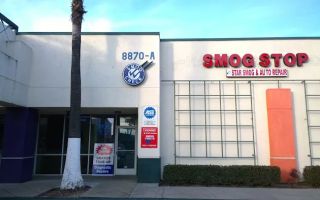How Long Does Emergency Fuel Delivery Take? What You Should Know
- Understanding Emergency Fuel Delivery
- Factors That Influence Emergency Fuel Delivery Time
- Typical Timeframes for Emergency Fuel Delivery
- Real-Life Cases and Customer Experiences
- Choosing the Right Tow and Rescue Service for Emergency Fuel Delivery
Understanding Emergency Fuel Delivery
Running out of fuel can be a stressful and frustrating experience, especially if it happens in the middle of nowhere or at an inconvenient time. Emergency fuel delivery is a service offered by many roadside assistance companies to provide drivers with fuel when they are stranded without enough gas to reach a nearby station. Instead of having to tow your vehicle or walk to the nearest station, a technician brings the fuel directly to your location.
This service typically delivers a small amount of fuel—enough to get your vehicle to the nearest gas station. It's a quick, hassle-free solution to get you back on the road.
Factors That Influence Emergency Fuel Delivery Time
The time it takes for emergency fuel delivery can vary based on a variety of factors. While many people expect a quick turnaround, certain conditions may influence how long it takes for the service to reach you and deliver the fuel. Here are the main factors that can impact delivery time:

Fuel 4
720 Tonnelle Ave, Jersey City, NJ 07307, USA
1. Location and Accessibility
The distance from the towing company to your location is one of the biggest factors affecting delivery time. If you're located in a remote area, in the middle of a busy city, or on a highway, the time required to reach your car can vary significantly. Additionally, accessibility can impact the delivery—if you're on a busy street or in a parking lot, the technician might face challenges in getting to your vehicle.

Nearest gas station
353 Smithtown Blvd, Ronkonkoma, NY 11779, USA
2. Time of Day
Emergency fuel delivery can take longer during peak hours or late at night. If you're requesting a fuel delivery during rush hour or during a storm, the service provider may experience delays. On the other hand, during off-peak hours, the service might be quicker as there is less traffic.
3. Service Availability
Not all roadside assistance services provide fuel delivery, so availability can be an issue. Companies that do offer this service may have different response times depending on their capacity, location, and the number of ongoing service requests. It's always a good idea to confirm service availability before relying on it during an emergency.
4. Vehicle Type and Fuel Requirements
Some vehicles may have unique fuel requirements or limitations, such as diesel vs. gasoline engines, which could influence the type of fuel that needs to be delivered. If your vehicle uses a type of fuel that’s more specialized, the technician may need additional time to bring the correct fuel.
Typical Timeframes for Emergency Fuel Delivery
So, how long does emergency fuel delivery typically take? While the actual time can vary, most roadside assistance services aim to reach you within 30 minutes to 1 hour of your call. Here's a breakdown of typical scenarios:
1. Urban Areas
In major cities or densely populated areas, the delivery time is usually shorter. A technician can typically reach you within 30 to 45 minutes, depending on traffic conditions and your location. Urban areas with more traffic congestion can cause slight delays, but usually, the service is relatively fast.
2. Suburban and Rural Areas
If you're in suburban or rural locations, the delivery time might be longer—anywhere from 45 minutes to an hour or more. The time it takes to reach you may depend on how far the nearest technician is and the lack of service vehicles in more remote regions.
3. Emergency Situations
In some emergency situations, such as a storm or natural disaster, response times can be much longer. Road closures, high demand, and hazardous conditions can result in delays, sometimes taking several hours before the technician arrives with fuel.
Real-Life Cases and Customer Experiences
It's often the real-world experiences that give us a better sense of how emergency fuel delivery works in practice. Here are a couple of stories from drivers who’ve used the service:
1. Tom’s Late-Night Fuel Delivery
Tom was driving home from work late at night when his fuel gauge hit empty, and his car stalled on the side of the highway. He called for emergency fuel delivery, and although the wait time was about 40 minutes due to heavy traffic, he was relieved when the technician arrived with a few gallons of gas to get him to the nearest station. Tom was impressed with the professionalism and speed of the service, especially considering the time of night.
2. Sarah’s Remote Highway Rescue
Sarah found herself in a similar predicament on a remote highway, far from the nearest gas station. The nearest tow truck provider took over an hour to arrive, but the technician was able to get her car started with a small fuel delivery, ensuring she could make it to a nearby town to fill up completely. While the wait was long due to the distance, Sarah appreciated the quick service and communication from the roadside assistance team.
Choosing the Right Tow and Rescue Service for Emergency Fuel Delivery
When it comes to emergency fuel delivery, choosing a reliable and efficient towing and rescue service is key to minimizing your wait time. Some services, like Rescue & Towing, specialize in rapid fuel delivery and offer 24/7 assistance. Their professional technicians ensure a fast response time, whether you're in an urban area or a remote location.
If you’re ever in need of emergency fuel delivery, make sure to choose a service that offers fast, dependable support. Rescue & Towing offers excellent rates, swift response times, and additional roadside assistance services like tire changes and battery jumps. Check out their services at https://www.chucklesrescue.com to learn more.























